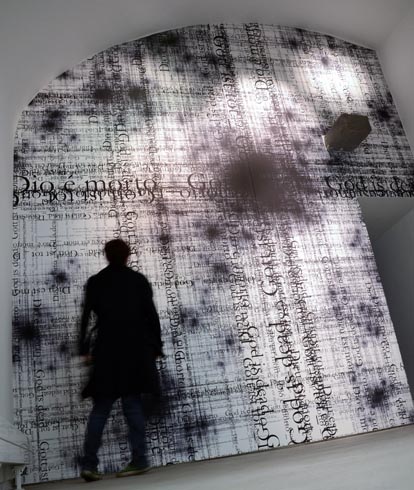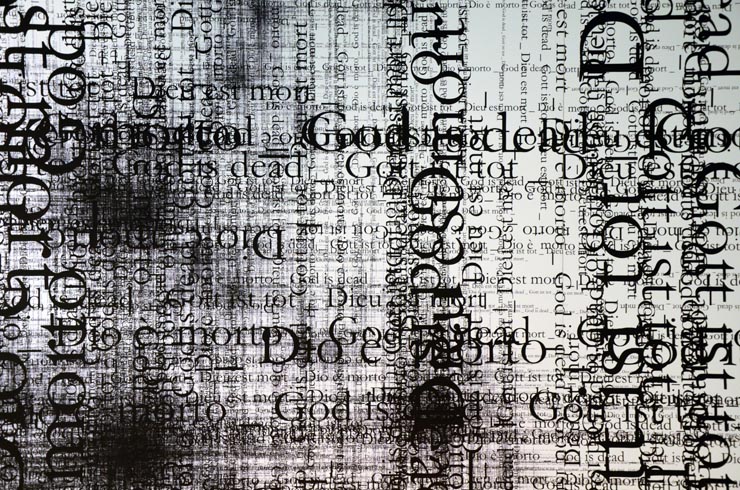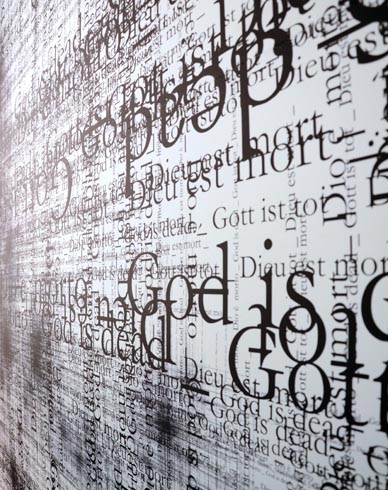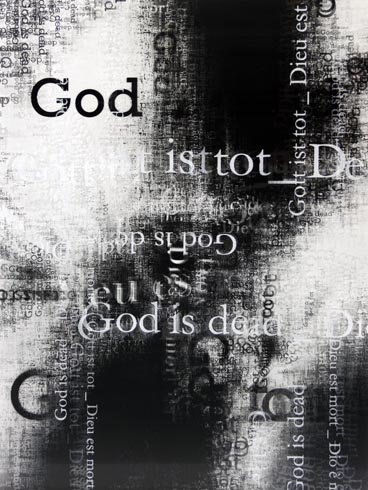Gott_ist_Tot, 2011-2012








(…) For his solo exhibition at the Claudio Bottello Contemporary gallery in Torino, the artist found inspiration in Nietzsche’s stay in the piemontese capital. The famous sentence taken from The Gay Science, prophecizing the death of God, is fundamental in the installation which occupies, like a leitmotiv, the whole space of the gallery. One should make it clear from the start that the artist’s point of view, from which he decided to tackle the complex issue of the title, has little to do with the active or passive nihilistic implications as regards the final nature of such a statement, preferring instead to inscribe itself already in the seminal consequences that such a declaration leads to for ‘the symbolic’. In a way, the discursive and iconic variations that Dombis is offering to us are potential evidence that we can free ourselves from and even be freed by, the symbolic, so much at work in the contemporary world, where the fable narrated by the Röcken-based thinker finally finds a stable ontological value in this age marked by the supremacy of images. His research, including his own peculiar epistemological approach, is anything but ingenuous. It can indeed be linked to instances of hermeneutic enlightening concerning certain forms of knowledge in which the aesthetic and scientific components tend to fuse on the ground of their common references to images. (…)
Extract from Pascal Dombis’ s Gott ist Tot by GianCarlo Pagliasso / More >
(…) Pour son exposition personnelle à la galerie Claudio Bottello Contemporary, l’artiste s’est inspiré du séjour de Nietzsche dans la capitale piémontaise. La phrase célèbre du Gai Savoir, annonçant la « mort de Dieu », est à la base de l’installation qui occupe, comme un leitmotiv, toute la surface de la galerie. Il faut toutefois préciser que le point de vue à partir duquel l’artiste traite le sujet complexe du titre a très peu à voir avec les implications nihilistes actives et passives concernant la nature « éventuelle » de l’annonce, mais il paraît plutôt s’inscrire déjà sur le fond des conséquences qu’ouvre cette affirmation «pour le symbolique». Les variations « discursives » et iconiques que Dombis nous propose sont en quelque sorte la preuve possible de la libération « du » et « de la part du » symbolique qui est désormais à l’œuvre dans le monde contemporain, où « la fable » proclamée par le penseur de Röcken trouve une valeur ontologique « stable » dans la primauté des images. Sa recherche, y compris l’approche épistémologique qui est sienne, n’est absolument pas ingénue ; elle peut être mise en relation à des instances d’éclaircissement herméneutique relatives à certaines formes de savoir où les composantes esthétiques et scientifiques visent toujours plus à s’unir sur la base de leur référence à l’image. (…)
Extrait de Le Gott ist Tot de Pascal Dombis, par Giancarlo Pagliasso / Plus >